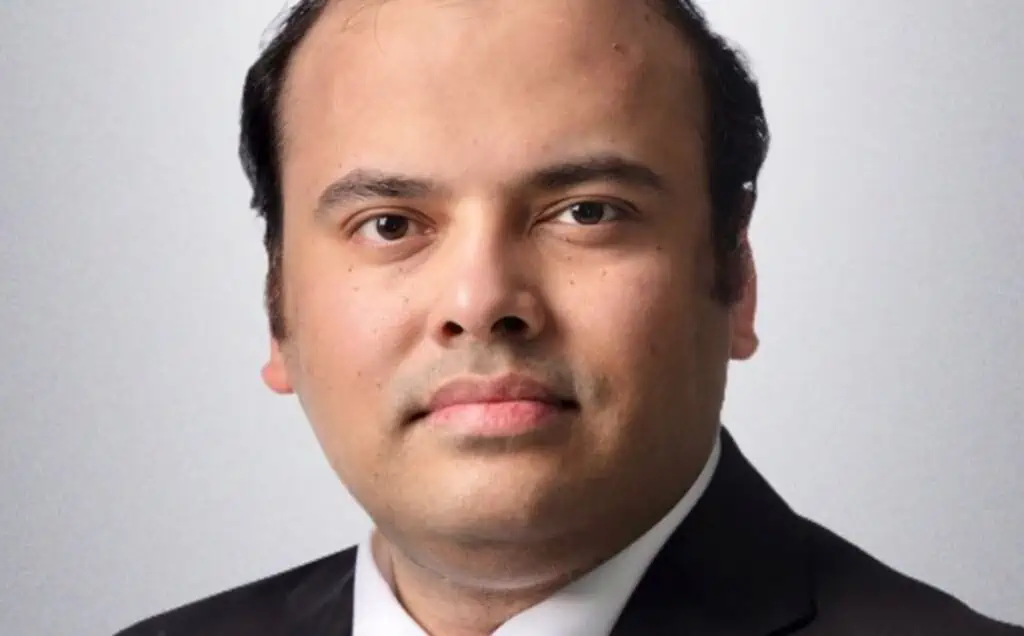
Arijit Raychowdhury, Professor, Electrical and Computer Engineering at Georgia Institute of Technology
Guest: Arijit Raychowdhury, Professor, Electrical and Computer Engineering at Georgia Tech
At Semicon India last month, Arijit Raychowdhury, a professor of electrical and computer engineering at the Georgia Institute of Technology, heard Indian Prime Minister Narendra Modi mention Moore’s Law in his 15-minute keynote, talking about “what India must do.” Raychowdhury was amazed. He saw in this comment genuine sign of political will and a commitment of national energy to semiconductors.
India’s enthusiasm for chipmaking, however, does not stem from a source similar to CHIPS Act that have sprung up in the United States and Europe.
India’s history with semiconductor production dates to the 1970s, with the launch of the Semi-Conductor Laboratory (SCL) in Mohali.
As Raychowdhury relates, SCL, at one point, was “a super competitive fab” with 180nm process production lines until fire struck the fab in the early ‘90s, burning the whole enterprise to a crisp. Money, at that time, was tight. So, this unfortunate incident marked “the end of the semiconductor journey for India for a while,” noted Raychowdhury.
In the ensuing decades, India focused its semiconductor efforts on design. In 1984, Texas Instruments built its first R&D center in India. IBM, Intel and other big players in the semiconductor industry followed suit by doing design in India. Today, depending on the data source, India today accounts for somewhere between 20 percent and 60 percent of design for major chip companies, according to Raychowdhury.
He describes these activities as “the first wave of semiconductors in India.” The second wave, “where people are really interested in manufacturing,” said Raychowdhury, starts with assembly, test and packaging (ATP). The prime example is Micron’s recently announced plan to build a new assembly and test facility in Modi’s politcal power center, Gujarat.
Raychowdhury, however, downplayed speculation that ATP would eventually lead to the establishment of an Indian semiconductor foundry. “There are talks about it, but at the moment, the near-term goal seems to have more assembly, packaging and testing going on in the country at various places.”
India’s recurring dream
Nonetheless, between its semiconductor first and second waves, India has launched numerous failed initiatives, issued false promises and hyped unrealized hopes for local semiconductor fabs. So, what happened? Why did these dreams fail and what has evolved over time?
India’s deficit of fundamental infrastructure – access to water, utilities, electricity, roads and railways – are the primary reason why these semiconductor pipe dreams have gone up in smoke.
While India has begun to remove some of the obstacles to an infrastructure upgrade, there are lingering and chronic impediments. These include policy uncertainties that stem from the political chaos that followed the creation of Indian democracy, combined with the corruption and red tape still entrenched from the colonial era. Acquiring land, organizing a manufacturing enterprise and aligning the public utilities that make possible a semiconductor fab is no easy task, acknowledged Raychowdhury. “There is no denying that many of these challenges still remain. That’s absolutely true.”
But given the trajectory, said Raychowdhury, “We are in a significantly better place than we were 10 years ago.”
Do real men have fabs? ‘I am hoping that we have evolved as men. I think we have also evolved with the understanding that semiconductors are a very global process.’
Ariijit Raychowdhury
Real men have fabs
A few decades ago, AMD’s founder Jerry Sanders famously said, “Real men have fabs,” meaning that maintaining control over production is crucial for a top-tier semiconductor company.
Given this mandate, wouldn’t India still want to have its own local fabs?
Raychowdhury responded, “I am hoping that we have evolved as men.” He added, “I think we have also evolved with the understanding that semiconductors are a very global process.”
In his opinion, “You don’t need to necessarily have a fab to be able to be impactful. Just look at the importance of packaging and testing at the moment. … That’s like 30 to 40% of the production cost. In some sectors of the market, packaging has 60% of the cost. That means it can lead to very large profit margins, if you set it up right.”
A positive side-effect is the creation of good local jobs, he added.
ATP is where India needs to be
Raychowdhury maintains that ATP is where India needs to be. “There is no point in trying to build a 3-nm process fab in India at the moment. It just doesn’t make sense,” he noted.
Given that it took 40 years for TSMC to reach its current status, the foundry business is undoubtedly “a long game.” At a time when Moore’s Law is approaching saturation, Raychowdhury doesn’t think now is the right time for India to start building fabs.
Besides, by getting into ATP, he stressed, “You can build a lot of redundancy in the supply chain.”
Listen to the podcast:
Copyright permission/reprint service of a full Ojo-Yoshida Report story is available for promotional use on your website, marketing materials and social media promotions. Please send us an email at talktous@ojoyoshidareport.com for details.
